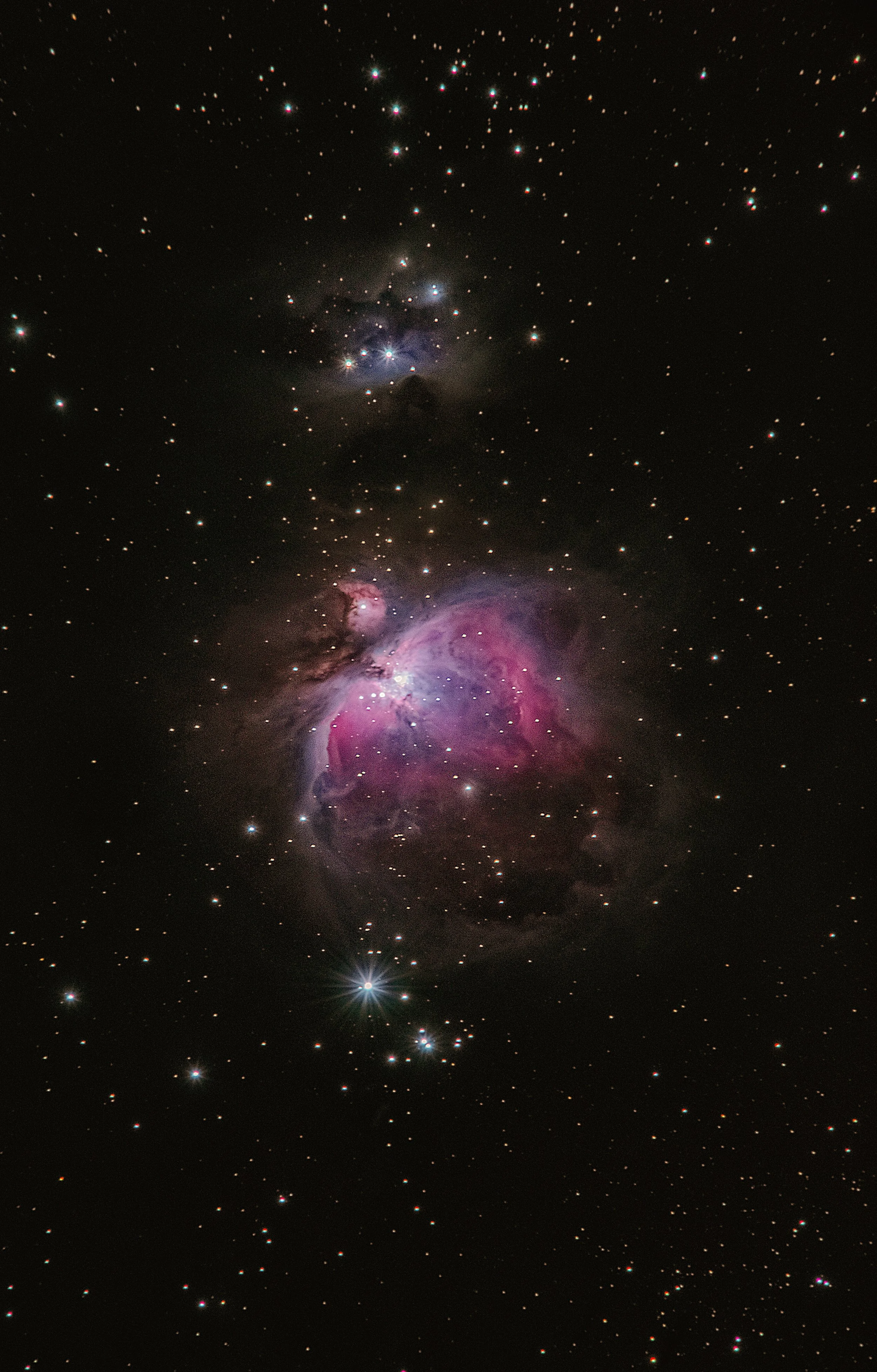The Cosmological Group
Galactic Orbital Dynamics
The orbital dynamics of galaxies have been a mystery since the earliest measurments in this pioneering field. Seemingly, it is as though the laws of nature which have been so well tested in the lab simply do not apply at the galactic scale. Moreover, the mystery is not singular, but twofold, violating the most fundamental tenants of orbital motion.
The first mystery surrounds the velocity of stars orbiting a galactic center. Consistently, stars are found with rotational velocities that are often many times faster than would be consistent with the visible mass we can measure. That is, using Newton's law of gravitation we would expect the orbital velocity of stars in a galaxy to be much less. For lack of a better term, the mystery has been identified as the 'dark matter' mystery. Not that there is any particular evidence suggesting a missing dark matter. But, the mystery can be compared to a galaxy that behaves as though there is additional matter that interacts gravitationally, but is otherwise not detectable.
The second mystery surronds the velocity of stars across the radial length of a galaxy. Newton's law holds that the further away from the galactic center a star is, the slower its rotational velocity should be, that is, star velocities should decrease with increasing radial distance. This is not what is observed. Quite the opposite. All the stars are moving at roughly the same speed regardless of their radial distance from the galactic center and that velocity is greater than what we would expect given the total mass of those galaxies.
Collectively the two mysteries suggest that the stars of a galaxy should just fly outward in all directions. So, why don't they? Aside from introducing a hypothetical dark matter into our standard models, no answer exists. And even when researchers do introduce dark matter, to produce the invariant velocities observed across the entire radius require extraordinary tayloring of that mass distribution. Hand fitted solutions are less appealing as they are not the discovery of a specific law of nature that explains the phenomenon. And that it is this mathematical understanding which grounds our explanation of natural phenomenon.
MQ, in contrast, has been applied without any special rules, taking into account all the classical characteristics expected in modern theory and resolves a galactic profile that matches the observational data to the same precision as our best measurement data.<sup3(Fig. data-preserve-html-node="true" 5) MQ achieves this in that it recognizes an upper bound to the number of mass events that can be observed at a point in spacetime,3(Fig. 4) just as there is an upper bound to the number of length events (i.e. units of length per unit of time = speed of light) that can be observed at a point in spacetime. When incorporating both the expansion of space and the mass event bound, the dark matter mystery is resolved.3(Eq. 66)
Among other accomplishments, this is an area where MQ has demonstrated a straight-forward physical picture of galactic orbital dynamics. Notably, MQ has also identified the Newtonian crossover,3(Fig. 4) the radial point in a galaxy where Newtonian behavior ceases and where non-Newtonian behavior begins (i.e. Milky Way at 9.32848 103 light-years). The overall picture completes a single story of how a mass frequency bound plays into gravity on the galactic scale.
New research is encouraged to verify and measure star velocities with respect to the MQ approach. This research travels in parallel with a continued interest in validating the principles of measurement quantization and the bounds to measurement frequency1(Eqs. 27-29) that lead to the effects described above. Also, at hand is mass accretion,1(Sec. 3.12) a new factor in the evolution of galaxies not well understood. Each of these phenomena open the door to new areas of research.
Objectives
Current mass models continue to estimate orbital star velocities within galaxies. Using MQ3(Sec. 3.3) this research may be combined with existing work to increase reliability in our measure of star velocities.
Additional research is needed to expand the family of galaxies where MQ is applied. This will afford researchers a greater range of data with which to understand the effects of measurement quantization.
One consideration not taken into account in the most recent published work is the effect of mass accretion.1(Sec. 3.12) This is a new phenomenon not considered in modern theory and its effect on galactic rotation has not been fully explored. Additional studies that single out the effects of mass accretion are needed.
- More research should be expanded to galaxies with significantly displaced centers of gravity. Again, a diversity of research applications can bring new understanding as to the effectiveness of MQ with respect to galactic orbital dynamics.
Inquiry
- With a firm understanding of mass frequency bounds,1(Eqs. 27-29) we realize that models describing how galaxies evolve may now incorporate the effects of MQ with which to better understand how galaxies form. For one, how does the mass frequency bound3(Fig. 4) affect super massive galaxies both presently and in their historical development?
- Is the Newtonian crossover3(Fig. 4) fundamental to all galaxies. A survey of galaxies would provide a deeper understanding of the precision which MQ affords us. Conversely, the development of techniques to identify the Newtonian crossover can enable researchers a new tool with which to directly calculate the total mass of a galaxy with a significant level of precision.
Supporting Research
Published Research
Quantum Inflation, Transition to Expansion, CMB Power Spectrum


